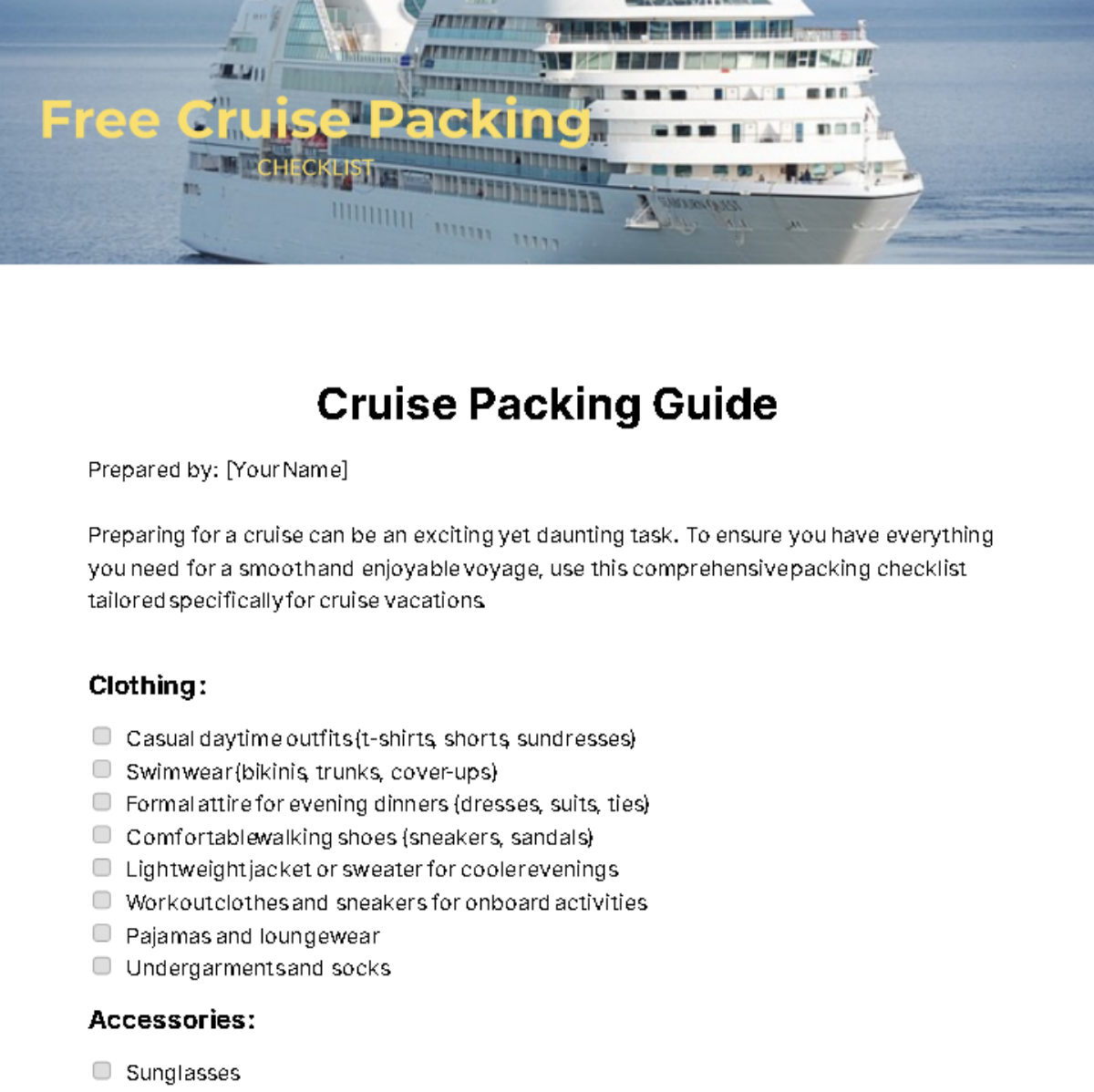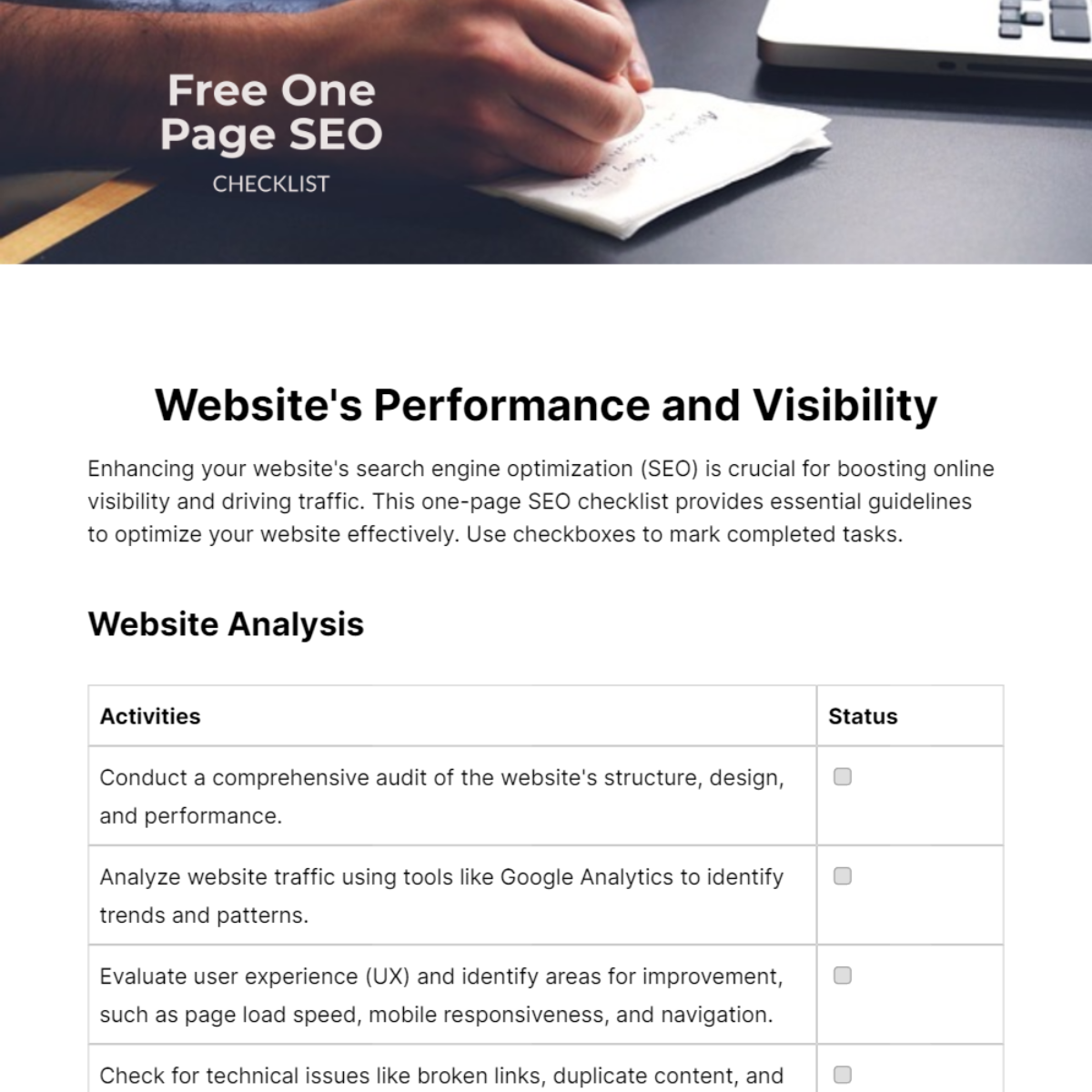Enhance Your Site
Prepared by: [Your Name]
Elevate your website's presence and achieve optimum SEO performance with this meticulously curated Google Ranking Factors SEO Checklist. Prioritize essential website enhancements such as high-quality content, mobile responsiveness, fast loading times, secure connections, and strategic keyword incorporation to increase online visibility. Follow this checklist promptly to align your website with Google's ranking criteria, aiming for improved search engine rankings and wider online reach.
1. High-Quality Content:
Conduct keyword research to identify relevant topics.
Create comprehensive, informative, and engaging content that addresses user needs and interests.
Use multimedia elements such as images, videos, and infographics to enhance content quality.
Regularly update and refresh existing content to maintain relevance and accuracy.
Incorporate storytelling, case studies, and expert opinions to add value and credibility to the content.
Implement a content calendar to ensure consistent publishing and coverage of relevant topics.
Encourage user-generated content such as reviews, testimonials, and comments to foster engagement and authenticity.
2. Mobile Responsiveness:
Perform mobile usability testing across various devices and screen sizes.
Optimize website design and layout for mobile devices, ensuring easy navigation and readability.
Implement responsive web design techniques to adapt content and layout dynamically based on the user's device.
Use mobile-friendly fonts, buttons, and form elements to enhance user experience on mobile devices.
Minimize the use of large images and heavy scripts that may slow down page loading on mobile devices.
Ensure that all interactive elements are easily accessible and functional on touchscreen devices.
Monitor mobile performance metrics such as bounce rate, time on site, and conversion rate to identify areas for improvement.
3. Fast Loading Times and Page Speed:
Optimize images by compressing file sizes and using the appropriate file formats (e.g., JPEG, PNG).
Minimize HTTP requests by combining CSS and JavaScript files and using asynchronous loading techniques.
Enable browser caching to store static resources locally and reduce server response time.
Utilize content delivery networks (CDNs) to distribute content geographically and decrease latency.
Enable GZIP compression to reduce file sizes and decrease the time it takes to transfer data.
Minimize the use of third-party scripts and plugins that may impact page loading times.
Regularly monitor and analyze page speed using tools like Google PageSpeed Insights or GTmetrix and address any performance issues promptly.
4. Secure Connections:
Implement HTTPS by obtaining an SSL/TLS certificate to encrypt data transmitted between the user's browser and your server.
Ensure that all forms and user inputs are protected from potential security vulnerabilities such as SQL injection and cross-site scripting (XSS).
Regularly update and patch server software, content management systems, and plugins to address security vulnerabilities.
Use secure authentication methods such as multi-factor authentication (MFA) to protect user accounts from unauthorized access.
Conduct regular security audits and penetration testing to identify and remediate potential security risks.
Educate website users about safe browsing practices and the importance of using strong, unique passwords.
Implement security headers such as Content Security Policy (CSP) and HTTP Strict Transport Security (HSTS) to mitigate common web security threats.
5. Relevant Keywords and Quality Backlinks:
Conduct keyword research to identify high-volume, low-competition keywords relevant to your industry and target audience.
Optimize on-page elements such as title tags, meta descriptions, and headings with target keywords.
Create high-quality, shareable content that naturally attracts backlinks from reputable websites in your niche.
Reach out to industry influencers, bloggers, and journalists to promote your content and earn quality backlinks.
Participate in online communities, forums, and social media platforms relevant to your industry to build relationships and earn mentions.
Monitor backlink profiles using tools like Ahrefs or Moz to identify new link opportunities and disavow toxic links.
Continuously analyze and refine your link-building strategy based on performance metrics such as domain authority, referral traffic, and anchor text diversity.

















































